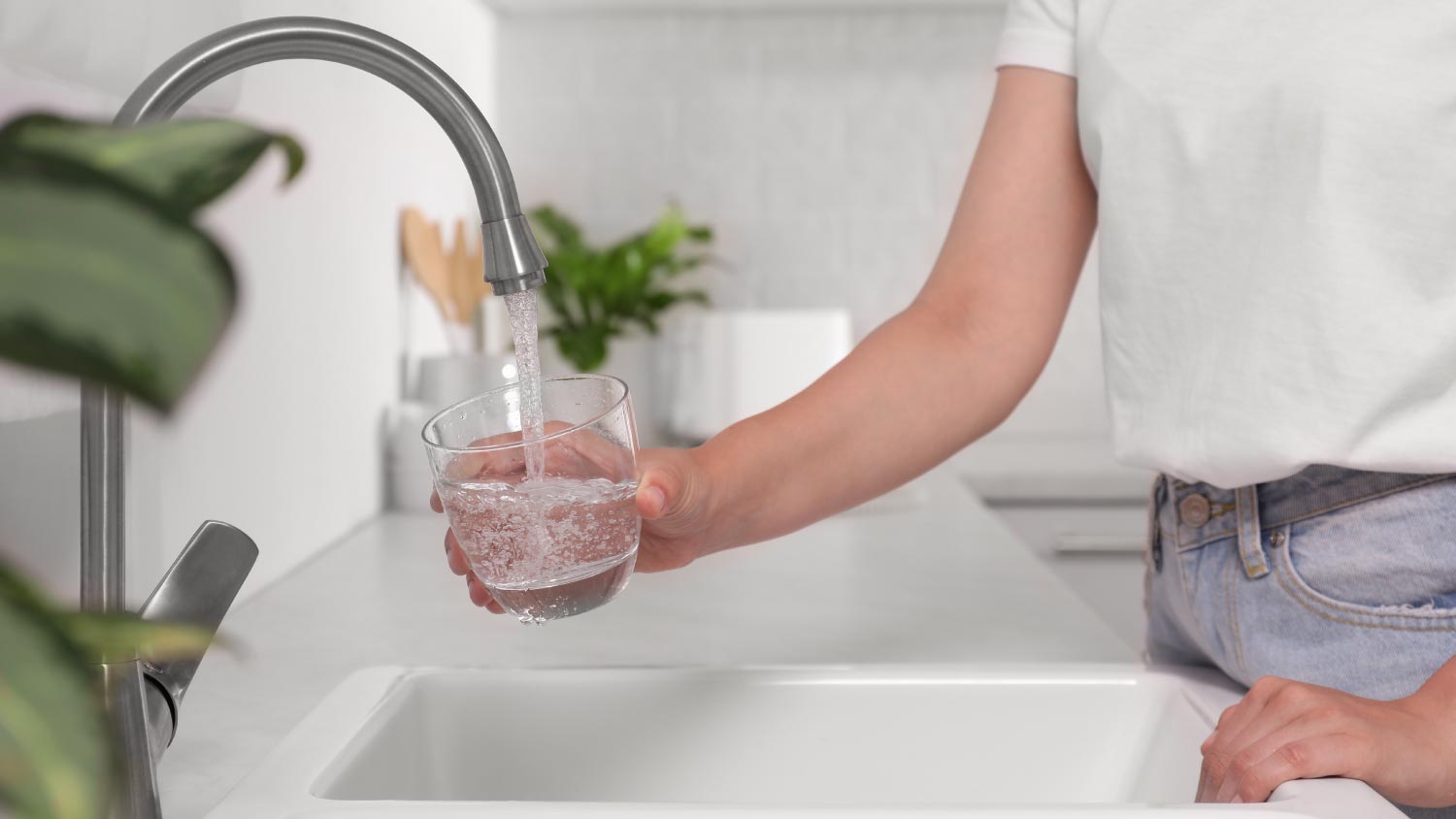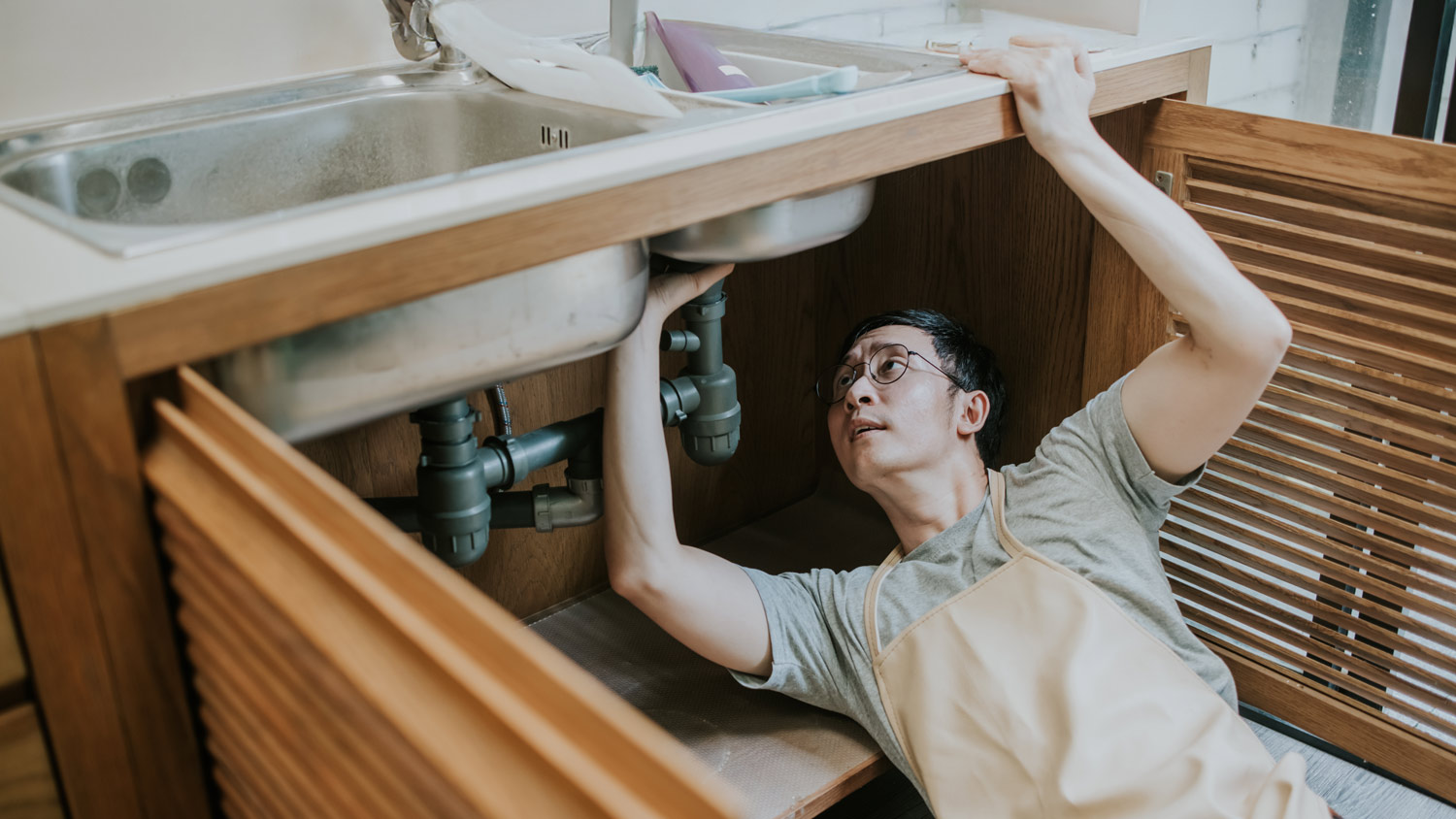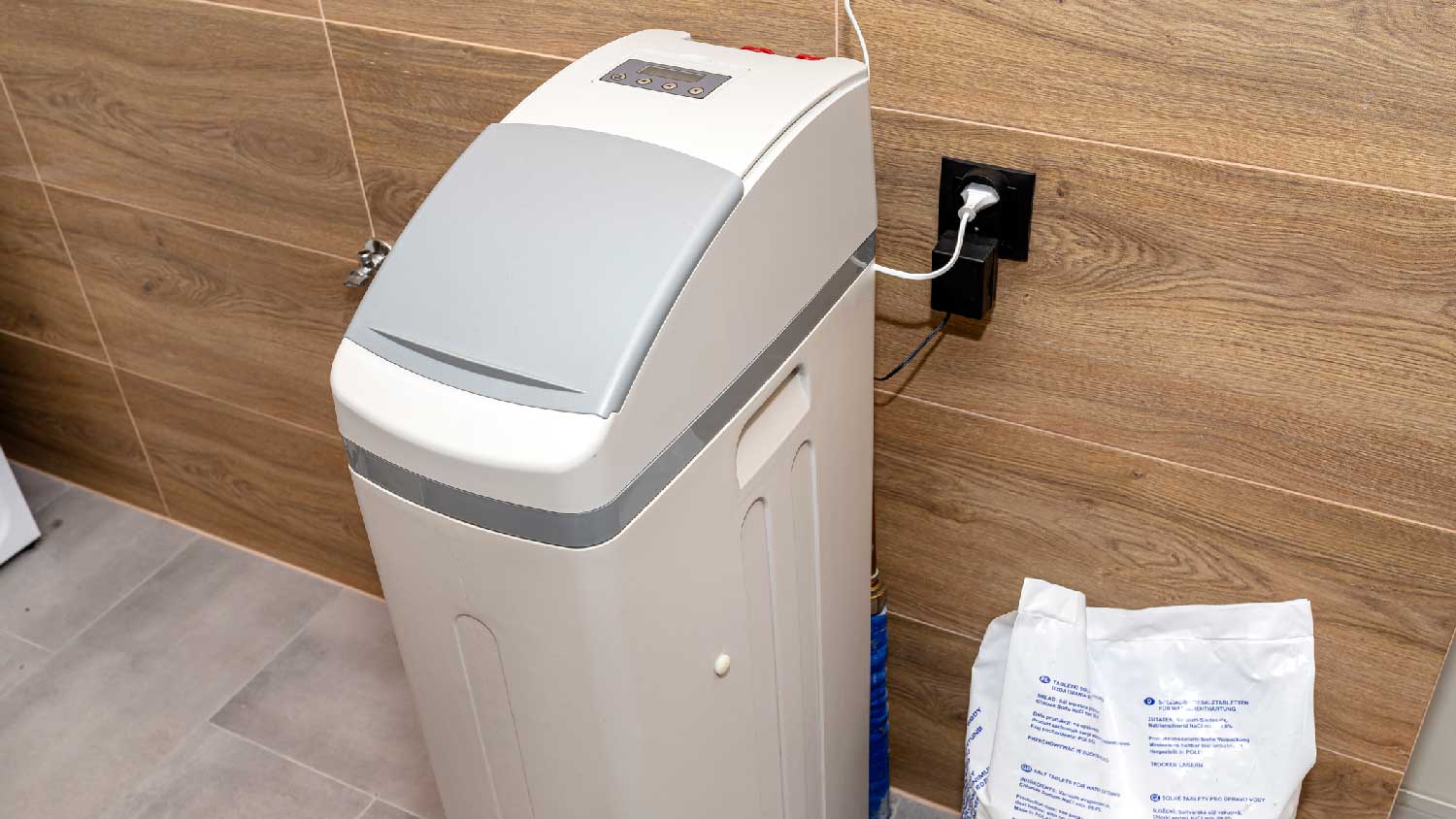Give Your Water a Gentle Touch With These Efficient Water Softeners
It’s not that hard to soften your H20


No one likes the feeling of hard water wreaking havoc on their skin or stubborn calcium deposits stuck to dishes, cups, and more. Not only does regular tap water contain hard mineral deposits, but hard water can also wear down your appliances.
Investing in a water softener can help mitigate these issues while also making your home more energy-efficient.
What Is an Energy-Efficient Water Softener?
The term “energy-efficient” refers to the environmental impact a product or method makes on the planet. To qualify for that prestige, a product must promote energy or water efficiency, and reduce carbon footprints compared to traditional products or the lack of the efficient product in question.
All water softeners mitigate the impacts of hard water buildup and damage, lowering how much energy you need to clean and maintain your home. The question is—which are most efficient?
Water softeners are ideal for those looking to live green because they:
Lower your energy usage by keeping hard minerals out of your water heater.
Save water by reducing the length of your appliances’ wash cycles.
Reduce hard mineral deposits in your plumbing system, improving the quality of your pipes.
And lower the need to use harsh, excess detergent on your appliances, increasing the lifespan and performance of your appliances.
All of these benefits help reduce your carbon footprint, which is the amount of greenhouses gases our actions contribute to the environment.
How Do Water Softeners Work?
Water softeners work by either removing or neutralizing hard water particles like calcium and magnesium, effectively “softening” tap water. By removing these particles, your water is more effective at cleaning your laundry, dishes, and body without drying your skin and leaving calcium deposits behind on your items.
Types of Water-Saving Softener Systems
There are four main residential water softener systems: ion-exchange, salt-free, magnetic, and reverse osmosis systems. Though each water softener works to remove or neutralize calcium, magnesium, and other hard water particles from your water, you’ll want to know the differences before you make a purchase:
1. Ion-Exchange Water Softener
Ion exchangers cost around $500 to $2,000 to install. In an ion-exchange water softener, the water flows into the tank of the water softening system and filters through what is called resin beads. These beads are negatively charged, allowing for the positive minerals and other particles in your hard water to stick to the beads. The minerals (typically calcium and magnesium molecules) are then swapped out with sodium molecules.
Once the beads have attracted these particles, the water is now soft and ready to leave the tank and get distributed to your sinks, faucets, dishwashers, washing machines, and more.
The main downside to this popular water softener system is that there is a small increase in sodium in your tap water, though some ion systems use potassium instead of sodium as a replacement for hard minerals.
2. Salt-Free Water Softener
While salt-free water softeners aren’t as effective at removing minerals from your water system as ion-exchangers, they do have a positive impact on your plumbing system. As with a salt-based system, a salt-free water softener system uses beads as a part of its process. These polymeric beads attract heavy minerals, turning them into crystals and then neutralizing them.
This crystallization process, called template-assisted crystallization (TAC), prevents the heavy minerals from scaling and building up in your pipes, improving the functionality and lifespan of your plumbing system.
Keep in mind, salt-free water softeners are more expensive upfront than ion-exchange systems, costing you about $800 to $4,000 on average. They also tend to run smaller, which may be great for small- to medium-sized homes but not so great for larger homes or areas with extra high hard water levels, as these factors may require a more powerful system.
3. Magnetic Water Softener
Tiny house owners and apartment dwellers, unite. Magnetic water softeners, or electric water softeners, are a great option for smaller homes. They’re also usually non-invasive, meaning you don’t need access to a water line to install one. Some models, however, do need a connection to your electrical system.
Magnetic water softeners attach to your water pipe and work through the use of magnetism, as the name suggests. Uniquely designed, electromagnetic coils create a magnetic field to neutralize heavy minerals from your water, preventing the minerals from building up in your pipes, faucets, and appliances.
At the same time, like with salt-free water softeners, magnetic systems don’t remove the minerals once neutralized. Though an electronic system is more affordable than the other options, costing anywhere from $200 to $600, it also increases your electric bill costs, making a magnetic water softener less efficient than other options.
4. Reverse Osmosis Water Softeners
For the ultimate water softening system, a reverse osmosis water filtration system will remove the most minerals and contaminants from your water. The system can either be installed under your sink as a single water point or installed to your entire water system, depending on your needs.
Calcium, magnesium, chlorine, arsenic, and more don’t stand a chance against this system, which uses a semi-permeable membrane to filter out hard minerals and other molecules. These hard water particles are then flushed away, leaving behind clean, soft water.
However, while this system does purify your water, it isn’t the most efficient when it comes to saving water. The Environmental Working Group states that reverse osmosis systems use approximately three times the water they treat, making them more suitable as fixtures on your kitchen sink if you’re hoping to make a sustainable choice.
These systems also cost more, around $1,500 on average, and you have to routinely pay for replacement cartridges for the carbon filters inside the system.
How to Find an Environmentally-Friendly Water Softener?
It’s wise to find a water softener system that is non-electric and powered by moving water, such as an ion-exchange or salt-free water softener. Moving water creates kinetic energy, saving energy usage in the home.
Just remember to do the following:
Choose a water softener system that doesn’t require electricity to run.
Find a high-quality softener, as it will perform better and last longer.
Choose a water softener that eliminates a need for detergent additives or repeated cycles to ensure cleaner dishes and clothes. These additives enter the general water supply, impacting the local environment.
Only opt for single-source reverse osmosis systems to reduce the water wasted during the purifying stage.
Avoid products that require frequent filter replacements, as these contribute to waste.
Water Softeners for Appliances
When choosing a water softener, make sure to find one good enough to make your washing machines and dishwashers more efficient. Single point water softener systems that are attached to or distribute water to your dishwasher and washing machines will also improve the performance of your machines, allowing you to lower the settings to achieve the same level of cleanliness that you had before upgrading your water system.
In fact, the Water Quality Research Foundation determined that you can reduce detergent by 50% and decrease the temperature of your washing machine from 100 degrees to 60 degrees Fahrenheit by using a softener. Likewise, using a water softener for the dishwasher can save up to 70% on detergent.
Do I Need a Water Softener?

Some residential areas are more prone to hard water than others, and the only real way to know is to test your water. If your water comes from a private supply, like from well water, then you’re likely already testing your water supply yearly to ensure it’s safe to drink.
For homeowners whose water comes from a public source, you may want to contact a water softener company near you before you choose a water system. A professional can perform a water quality test to see which water softener is right for your home.




















